Spinach Egg Cake, Herb Salad, Asparagus Vinaigrette, and a Book Review too
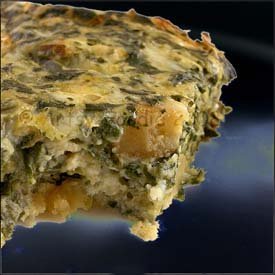 |
I can hear you. Grumbling. You’re thinking I’ve turned to summer programming, to reruns. Maybe you’re planning a nasty email, with a subject line that goes “a tart by any other name is still a tart”. Well look here, this is a cake, and it’s not the same as last week’s cake. Variations on a theme maybe, but that’s because I had another idea. The obvious one.
The last time I made a tart (yes, last week. You’ve already pointed this out) I was complaining about the problem of the greasy puff pastry crust, and I experimented with ways around that. Another way around it is to dispose of the crust all together. Yes, at last. A Beanstock recipe that all you die-hard carb phobes can shove a fork into.
The recipes this week – and you’ll get a handful – arose from one sorry realization: blogs have ruined me. Have they ruined you too? What I mean is this:
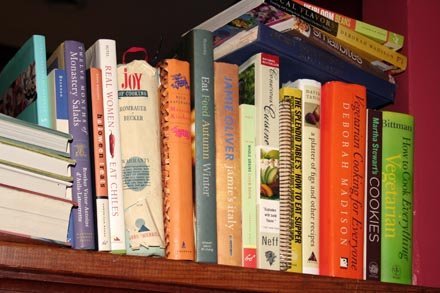
There are more where these came from. These are my cookbooks. Beautiful, redolent of aging cardstock, garlic and curry, their pages muddied with coffee and chocolate, bloodied with wine and beet juice (or is that blood?), and streaked with cinnamon and ancho. Between their covers is a promise: that the world is food, and I can shape it into any reality I want. In that moment when I first pull one toward me, my pulse quickens and. . . I believe.
But that’s only when I use these splattered treasures, and I don’t use them.
The embarrassing majority of my recipes come from blogs. Hers, and hers, and his, and this one, and yours too. My Google reader allows me to tag recipes with overwhelming precision, and daily they flood in. Here are my categories: vegetarian, vegan, beans (obviously), pescetarian, salmon, halibut, cod, tuna, barramundi , make when not vegan anymore, beets, cauliflower, spicy, tofu, not diet food, breakfast, appetizer, entrée, dessert, condiment, party food, potluck, try this soon…
Ironically, some blogs were born in protest of this phenomenon. 101 Cookbooks, for example. And there are several others that I read who pull recipes from books – but they’re not my books. And then there are the times that I don’t even use a recipe, but instead open the pantry, the fridge, the cabinets, and cook. This, of course, shows my progression, it shows what I’ve learned – hell, it shows that I’ve learned something anyway. It’s perhaps the purest expression of cooking, and yet I mourn my lovely, picture-laden books. They truly embrace all cuisines – there is no theme. I have more meat recipes than most meat eaters, and more bean recipes than, well, anyone you know. Their publication dates range from 1947 – 2010 (if you count the advanced preview copy of one I got, which I’m not yet allowed to name).
Except that the relatively recent focus on local and seasonal foods is changing that a little. That’s because these books emphasize a way of being in the kitchen, a relationship to food, rather than step by step instructions for adding this and getting that. No book embodies this idea more to me though than David Tanis’s A Platter of Figs. This book is less about how to make food and more about how to eat it. How to love it, in the way that you can only love something you truly, intimately know.
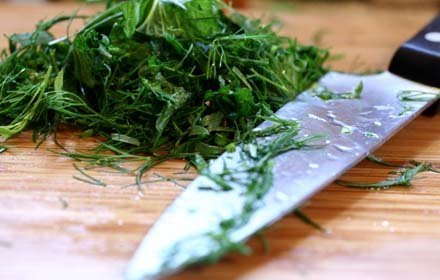
Tanis explains this best in his introductory paragraph, when he writes: Do you really need a recipe for a platter of figs? No. Is that the point? Yes. Does it have to be more complicated than that? Not really. Yet to serve the figs, you need to know about ripeness and seasonality – the seasons of the garden, and you need to know your figs.
You can read my full review of the book here. But for now, just know that this book, along with The Flavor Bible (which I’ll be telling you about soon) have changed my cooking dramatically and in just the last six months.
So, I wanted to cook and I had fresh market food and a book that gave me its blessing to feel my way through the combinations in the ways that felt truest to me. I was in the mood to craft it into something beautiful, and most of all, I wanted to share it with people that matter to me. Nothing else to do then except what Simon and I did: we called an impromptu gathering this past Sunday, which is the kind of gathering that Tanis seems to love best. We sent out an email Saturday afternoon and by Sunday evening nine of us were gathered in our home, strewn on couches and in chairs, laughing, talking, sipping wine (and limoncello mixed with dry champagne — try this, and thank me later), sharing, remembering past meals and dreaming ahead to future ones. Celebrating the first tender harvest of the season.
Here’s with what:
The Recipes
Crustless Spinach Cake with
Herb Salad
Asparagus Vinaigrette
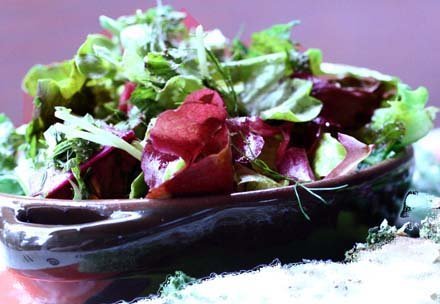
I’m going to give you the food preparation instructions from Tanis’s book pretty much verbatim. I want you to see the importance he places on handling the food, the loving attention he directs to it. The way you handle it, and the quality of ingredients in the first place, is far more vital to a dish than the amount of any particular ingredient used.
Spinach Cake — Vegetarian, Gluten-free
(from page 34 in A Platter of Figs)
Tanis calls this a cross between a custard and a frittata, and he recommends serving it chilled or at room temperature – which means it’s a great make-ahead dish.
|
|
2 bunches fresh spinach (about 2 pounds)
2 medium leeks
2 tablespoons butter
Salt and pepper
Nutmeg
2 cups whole milk
6 large eggs
A pinch of cayenne
A little bit of Parmigiano
Cut the spinach into ribbons, discarding the tough stems. Clean well – Tanis recommends swishing it in a large basin of cold water, then lifting it out into a colander and repeating, twice, with a fresh bowl of water each time.
Trim the leeks and remove the tough outer layer. Cut the leeks into a small dice, then clean these as well. The Tanis method is to fill a bowl with water, submerge the leeks, agitate them, then let the dirt settle to the bottom of the bowl. Remove the leeks with a slotted spoon – then repeat, twice. Tanis is freestyle about recipes but not when it comes to cleaning the ingredients.
Melt the butter in a deep pan over medium heat. Add the leeks, season with salt and pepper and sauté, stirring now and then. Cook for about 5 minutes. Turn up the heat and add nutmeg, then add the drained spinach in layers, sprinkling each layer with salt. Cover tightly and let the spinach steam rapidly over the leeks. When spinach is barely wilted (about two minutes), turn out the contents onto a platter and let cool.
Preheat oven to 400 degrees. Taste the cooled spinach-leek mixture for seasoning and adjust – it should be strongly flavored with pepper and nutmeg. In a blender, puree the cooked vegetables with the milk and eggs, in batches, adding a bit more salt, pepper and some cayenne.
Pour the soupy green mixture into a buttered baking dish or a 9-inch deep-dish pie pan. Grate a bit of Parmigiano over the top and bake, uncovered, for 45 minutes or until a knife inserted into the center comes out clean. Cool to room temperature and serve in wedges.
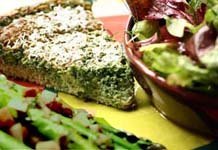 |
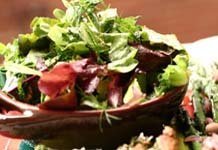 |
Herb Salad – Vegan, Gluten-free
(from page 17 of A Platter of Figs)
This salad celebrates the first herb harvest of the season. I had enough of everything, even tarragon, and to my mind that made it all taste even better.
8 handfuls small arugula and lettuce leaves, the smaller the better (about ¼ pound)
4 Belgian endive (optional)
A mix of compatible fresh herbs – I used parsley, mint, dill, tarragon and chives
1 shallot, macerated
Juice of ½ lemon (I used a whole lemon because I can’t stand to see the other half go to waste)
Salt and pepper
¼ cup olive oil
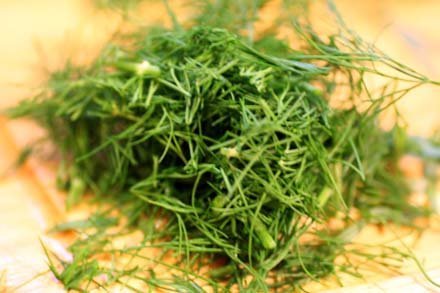
Wash and gently dry the arugula and lettuce leaves. Trim the endive, if using, and discard the outer leaves and slice crosswise about 1 inch thick. Combine with the washed greens and wrap in a clean towel and refrigerate until ready to serve.
Pluck the herb leaves from their stems, tearing larger leaves into rough ribbons. You will need roughly 2 cups of mixture of sweet herbs, plus a few chopped celery leaves (I didn’t use the celery).
Prepare a vinaigrette: Macerate the shallot with the lemon juice and a little salt. Then whisk in the olive oil. Add a little freshly ground pepper.
Put the arugula, lettuce and herb leaves in a low wide bowl. Sprinkle very lightly with salt and toss gently. Rewhisk the dressing and spoon half of it over the salad, then toss again to coat very lightly. The idea is that the salad will be barely dressed, but sprightly. Adjust with a little more vinaigrette, lemon juice, or a drop of oil. Toss taste and serve. (A spoonful of the vinaigrette over the spinach cake tastes good too).
Warm Asparagus Vinaigrette — Vegan, Gluten-free
(from page 62 of A Platter of Figs)
4-5 pounds fresh green asparagus
2 small shallots, finely diced
2 to 3 tablespoons red wine vinegar
salt and pepper
¾ cup olive oil
|
|
It should be noted here that Tanis is not obsessive about olive oil. He finds it silly that Americans spend upwards of $30 on a bottle – a surprising viewpoint from someone so dedicated to quality. His point is that price does not equal quality, and he goes on at a bit of length about this on page 22.
For the asparagus vinaigrette, break the tough ends off the asparagus spears and discard. If the spears are quite thick, peel them with a sharp vegetable peeler. Fill two large pots with 4 quarts water each, salt the water heavily, and bring to a rolling boil.
While the water is coming to a boil, make the vinaigrette. In a small bowl, macerate the shallots in 2 tablespoons red wine vinegar with a little salt. Let sit for a few minutes, then whisk in the olive oil and a little freshly ground pepper. Taste and reseason, adding more vinegar and salt if necessary – but don’t make it too tart.
Just before you’re ready to eat, put the asparagus in the boiling water and let them simmer briskly for 3 to 8 minutes (I went with 3), depending on their size. Remove them while they are firmly al dente and still bright green (the best way to check is to retrieve one and taste it). Lift the asparagus from the water with a large strainer and let them drain on a clean kitchen towel for a couple of minutes. As they sit they will continue to cook a bit.
Pile the spears onto a platter. Sprinkle lightly with salt and freshly ground pepper. Whisk the vinaigrette again and spoon it over the asparagus. Serve warm.

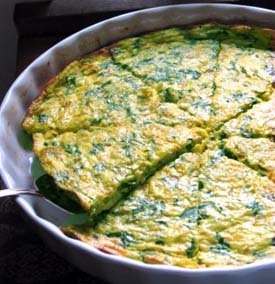
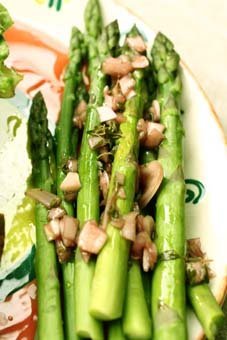
You’re not known for short posts Beanstock, but don’t forget, you’ve got old men reading your site. I had to get up for a bathroom break halfway through.
For a man that never cooks I have an impressive number of books. David sounds like my kind of guy, because if I were going to cook and I’m not, I would do it without doilies and souffle-stuff and anything French sounding. Nice review. If he sees it, he’ll be pleased.
Benj, seriously. Google reader hasn’t even updated with the new feed yet. Are you sure you don’t have a computer IN the bathroom??? How do you do this? I’m beginning to feel stalked.
My favourite post ever. Everything sounds fresh and wonderfully tasty. I am absolutely going to be making all three of these recipes — and soon.
Yum! There’s nothing like cooking something – anything – just harvested from your own garden. I love the Bittman book. I particularly like how he encourages experimenting with basic recipes.
I have most of those books. I’ll challenge you, book for book. bet I’d win… I do use mine, but that’s because I make myself resist the allure of blog recipes. Except for yours, of course. :0)
Well great, two more books I don’t have yet, and the shelves were full months ago. Your spinach cake looks fantastic. I definitely have to try that!
Yeah Lisa, I was actually specifically thinking of you when I said that I read blogs that use recipes from books. Your capacity to take in food literature humbles me!
Funny, but even though I can’t make out some of the titles on your cookbook collection I recognize most of those books. Local Flavors, Rick Bayless, Vegetarian Cooking for Everyone, Jamie Oliver, Conscious Cusine (?), Eat Drink Fall Winter. How’d I do? Lovely post, lovely food. And like you, I don’t use my cookbooks nearly as much as I wish. I do read them though.
That spinach cake recipe looks amazing! What a wonderful summer dish! I must try it!
Platter of Figs is my current favorite cookbook, and it’s going to take somethign special to oust it. I think your review really captured the spirit of the book and the beauty. I agree too that it’s a book that’s appealing to people who have a hard time following directions, lol.
STOP WRITING WHAT I’M THINKING
so my problem is that i buy the books and often don’t even use them at all – they just get glanced at and then relegated to “the stack”. pretty much it appears that i just like owning them because it makes me feel safe and strong, along with all the food i hoard.
so i too have this book. and it is wonderful. and tomorrow i am making the spinach-leek frittata recipe for brunch. thanks to you.
Fresh, delicious, seasonal.
I’m weeping with delight. You’re putting me to shame with this jam-packed-gorgeous post
I’m also blaming you for another cookbook purchase. I do own The Flavor Bible… but Platter of Figs has merely been catching my eye every now and again. Looks as though I might have to develop a more intimate relationship with it.
It all sounds lovely! I probably use cookbooks more often that blog recipes, but definitely rely on both. And then sometimes of course, no recipe at all and just freestyling in the kitchen